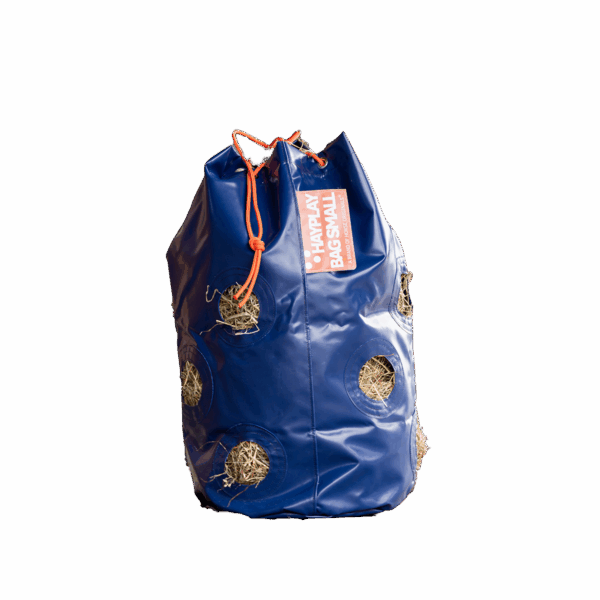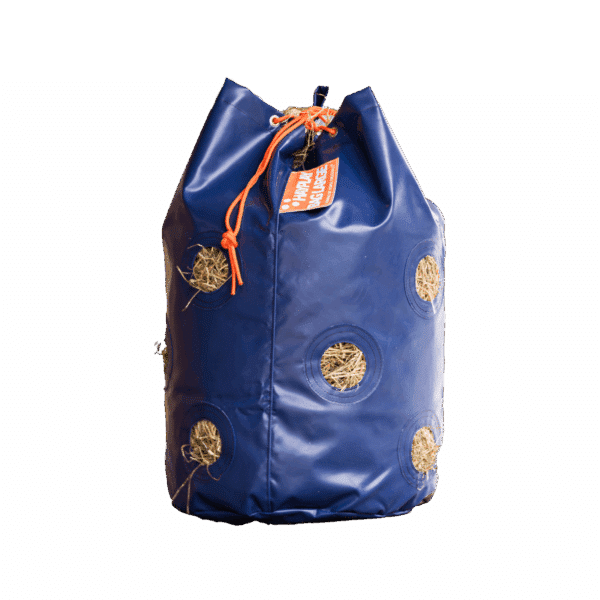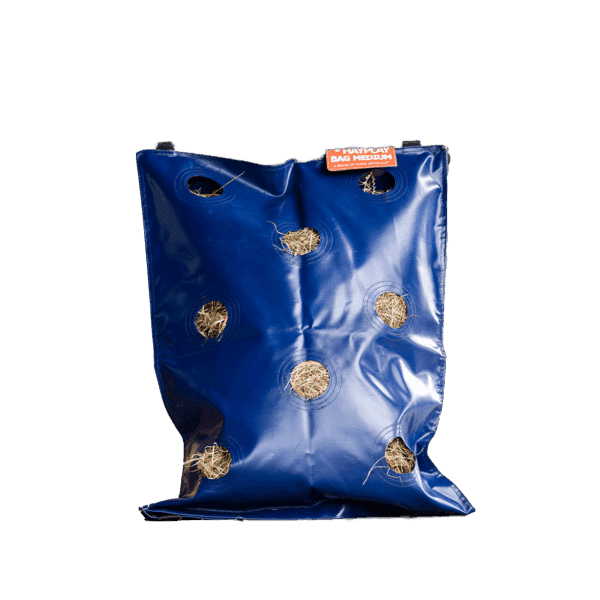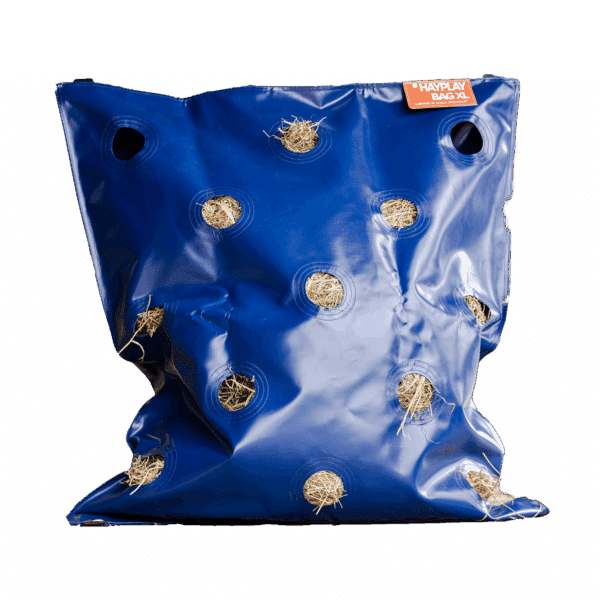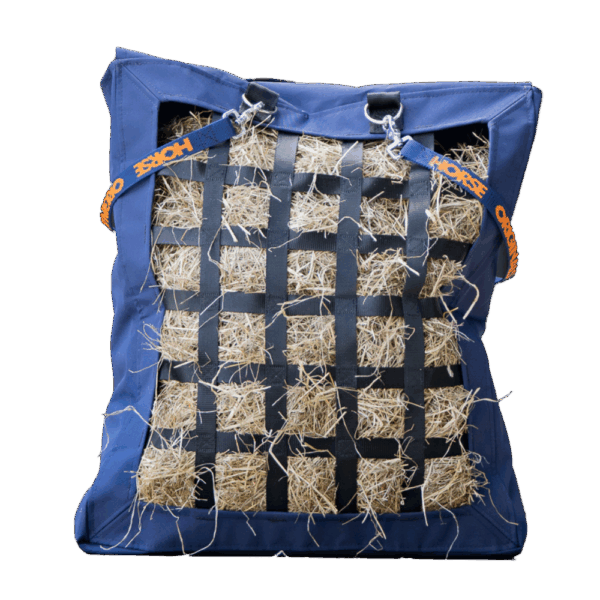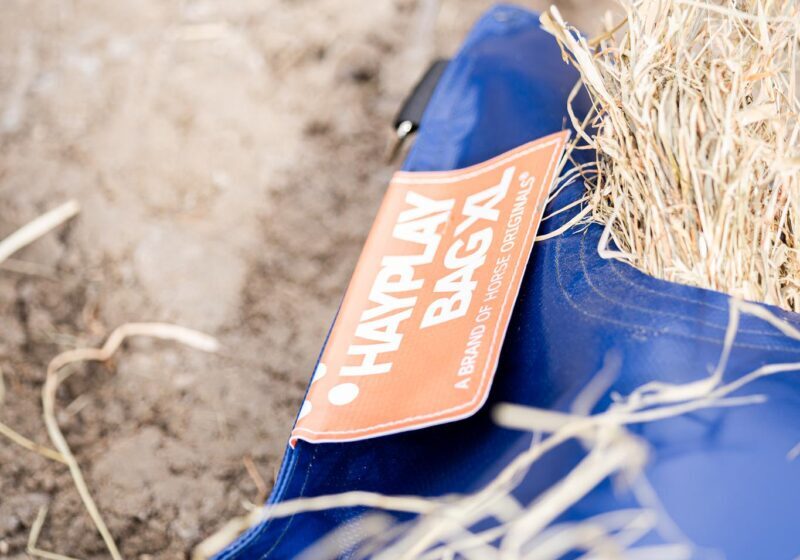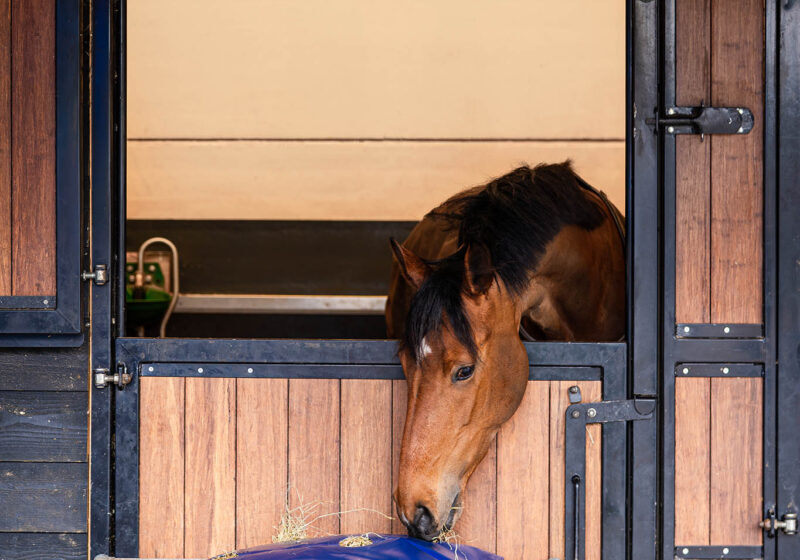Delsumma: kr 113,75
Vilken kvalitet på grovfoder behöver din häst?
Grovfoder är en naturprodukt, vilket betyder att näringsinnehållet kan variera. Det är inte ett standardiserat foder med jämna näringsnivåer. Särskilt variationer i energi-, protein- och sockerhalt kan påverka hästens hull (Body Condition Score, BCS) och i vissa fall leda till ämnesomsättningsproblem. Genom att förstå dessa skillnader – och veta vad just din häst behöver – kan du göra mer välgrundade val och välja det rätta grovfodret.
Tre kvalitetsnivåer på grovfoder
Enkelt uttryckt kan hö eller hösilage delas in i tre kategorier: grovt och lågvärdigt, medelkvalitet, samt fint och näringsrikt. Denna indelning bestäms främst av fiberinnehållet (råfiber). Ju högre fiberhalt, desto grövre och svårare smältbara strån – men också lägre energi. Med lite erfarenhet kan du lära dig bedöma fodrets kvalitet genom utseende och känsla. Generellt gäller att finare hö ofta är rikare på protein och socker, medan ett grövre hö har lägre värden. Men kom ihåg – socker- och proteinnivåer kan variera mycket, så enda sättet att veta säkert är genom en grovfoderanalys.
Grovfodernivåer
Grovt & lågvärdigt grovfoder
Har grov struktur och är relativt fattigt på socker, energi och protein. Passar utmärkt till hästar som lätt går upp i vikt eller inte arbetar särskilt hårt.
Passar för:
- Överviktiga hästar
- Hästar i vila eller lätt/medel arbete
- Ston i tidig dräktighet
Grovfoder av medelkvalitet
Har en mer balanserad struktur och innehåller måttliga nivåer av socker, energi och protein. Ett bra “allround-foder” för de flesta hästar med normala näringsbehov.
Passar för:
- Hästar som är något magra
- Hästar i regelbunden eller intensiv träning
- Unga hästar (2–3 år)
- Ston i sen dräktighet
Fint och näringsrikt grovfoder
Fintrådigt, näringsrikt och med hög halt av energi, socker och protein. Passar hästar med stora näringsbehov eller de som behöver öka i vikt.
Passar för:
- Kraftigt underviktiga hästar
- Föl
- Äldre hästar
- Ston i sen dräktighet och under digivning
Body Condition Score (BCS)
Justera alltid grovfoderkvaliteten utifrån hästens aktuella hull. Om hästen har BCS +1 eller högre (övervikt) eller –1 till –2 (undervikt), är det dags att utvärdera om fodret motsvarar behoven. Genom att kontrollera hullet var 4–6 vecka och justera fodret därefter kan du undvika stora svängningar i vikt och relaterade hälsoproblem.
- En överviktig häst behöver mindre energi och klarar sig ofta bra på grovt och lågvärdigt hö.
- En underviktig häst behöver mer energi – välj då medel- eller näringsrikt grovfoder.
Rätt typ av grovfoder skapar grunden för en välbalanserad foderstat och gör att hästen kan äta så mycket grovfoder som möjligt – även om viss begränsning ibland krävs vid övervikt.
Ålder
Unga hästar – särskilt under sitt första levnadsår – har höga behov av energi och protein.
Deras matsmältning och tarmflora utvecklas fortfarande och trivs bäst med rikligt med grovfoder av fin och näringsrik kvalitet. När hästen blir äldre (2–3 år) minskar tillväxthastigheten, och medel- eller grovt foder blir mer passande.
Kontrollera alltid proteininnehållet via grovfoderanalys. Om proteinet är lågt kan tillväxten hämmas – ett hö som ser rikt ut kan i själva verket vara proteinfattigt.
För äldre hästar med sämre tuggförmåga kan grovt foder vara svårt att hantera.
Då kan medel eller finare grovfoder hjälpa till att bibehålla hull och livskvalitet.
Träning och arbetsnivå
Hästar är naturligt byggda för rörelse. För många räcker det med en normal mängd energi även vid daglig motion. Om hästen däremot tränar hårt och börjar tappa hull bör du:
- Öka grovfodermängden
- Eventuellt välja ett mer näringsrikt foder
Om det inte räcker, kan du komplettera med kraftfoder. Arbetsbelastningen beror på flera faktorer – tid, intensitet, hastighet, frekvens, ålder och kondition.
Dräktighet och digivning
Dräktiga ston behöver mer energi och protein för att stödja fostrets utveckling och senare mjölkproduktionen.
Under sen dräktighet begränsar det växande fostret utrymmet i buken, därför är fint och näringsrikt grovfoder att föredra. Medel eller finare foder är idealiskt – särskilt eftersom energibehovet ökar markant efter fölning.
Sockerkänsliga hästar
I vissa fall är det inte bara foderkvaliteten utan sockerhalten som är avgörande. Hästar med insulinrubbningar – ofta kopplade till övervikt, fång, EMS, PPID eller hög ålder – kräver särskild försiktighet. I dessa fall är en grovfoderanalys ett måste. Det betyder inte att de alltid behöver grovt, näringsfattigt foder. Till exempel kan en senior eller PPID-häst som är underviktig må bättre av ett medelkvalitativt grovfoder – så länge sockerhalten är under kontroll.
Även hästar med tying-up (rhabdomyolys) kan vara känsliga för socker, trots att de inte har insulinproblem. För dessa hästar är rätt grovfoderkvalitet avgörande och bör anpassas efter både hull och arbetsnivå.
Utfodringsråd
Grovfoder är grunden i din hästs kost. Eftersom du ofta köper grovfoder för flera månaders förbrukning, är det klokt att be om rådgivning om den mest lämpliga typen av hö eller hösilage för just din häst. Att diskutera din analys med en foderrådgivare eller veterinär kan göra stor skillnad – och hjälper dig utfodra både smartare och tryggare.
Author

Anneke Hallebeek
Equine Nutrition Advice Veterinarian, nutrition specialist, and editor-in-chief for equine nutrition at Paardenarts.nl
Share this article
Producthighlight
HayPlay Bag – SMALL
kr 83,75- Perfekt för släpvagn eller lastbil.
- Utmärkt för uppställning på betesmark.
HayPlay ButtonBag MEDIUM
kr 113,75- Uppmuntrar till att äta med huvudet nedåt
- Bättre för nacke och rygg.
Related Articles
Shop our slowfeeders
Tailored feeding starts with the right forage choice.
Choose peace of mind, health and convenience.
Find out how the HayPlay Bag makes your stall smarter.
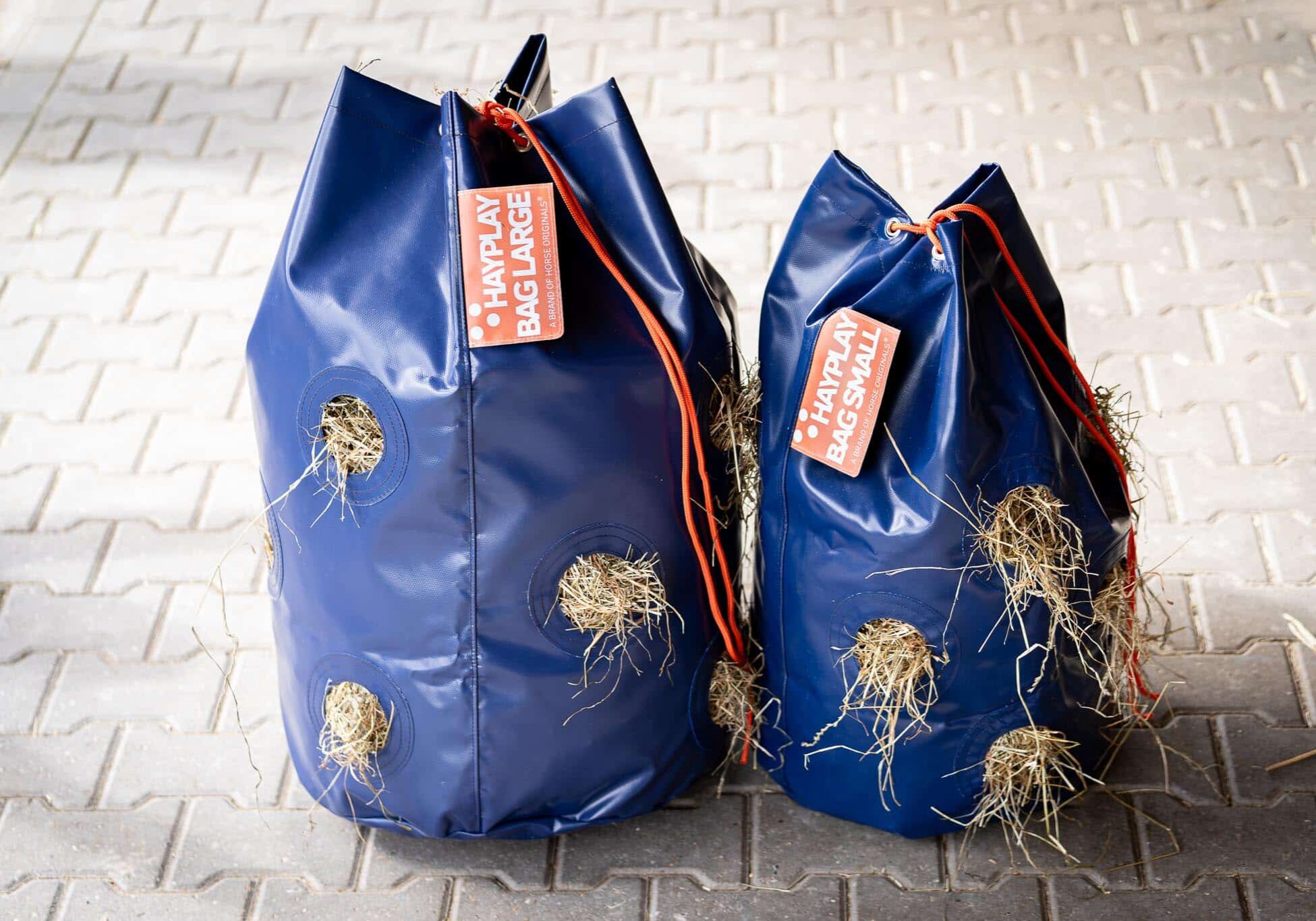
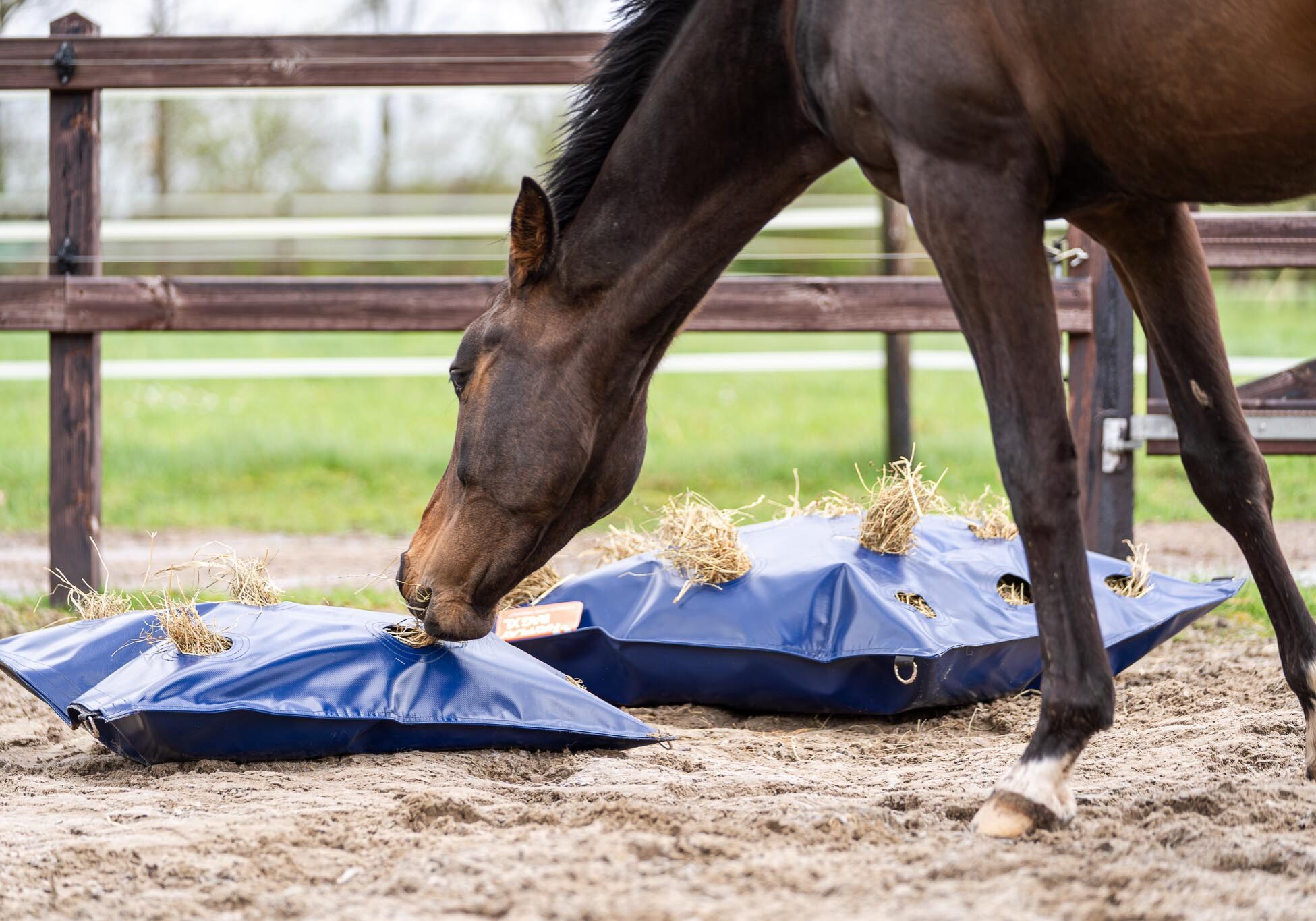
Forage Intake Optimization
Horse Originals Tip
Our slow feeders are designed to optimize the intake of all types of forage from low- to high-energy.
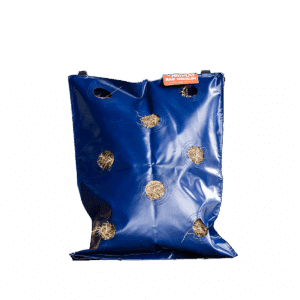 HayPlay ButtonBag MEDIUM
HayPlay ButtonBag MEDIUM 